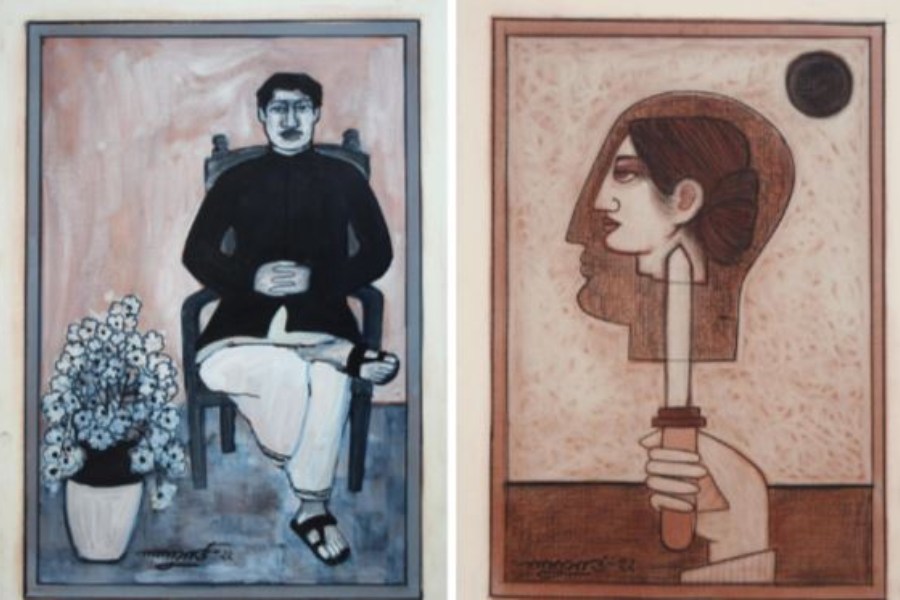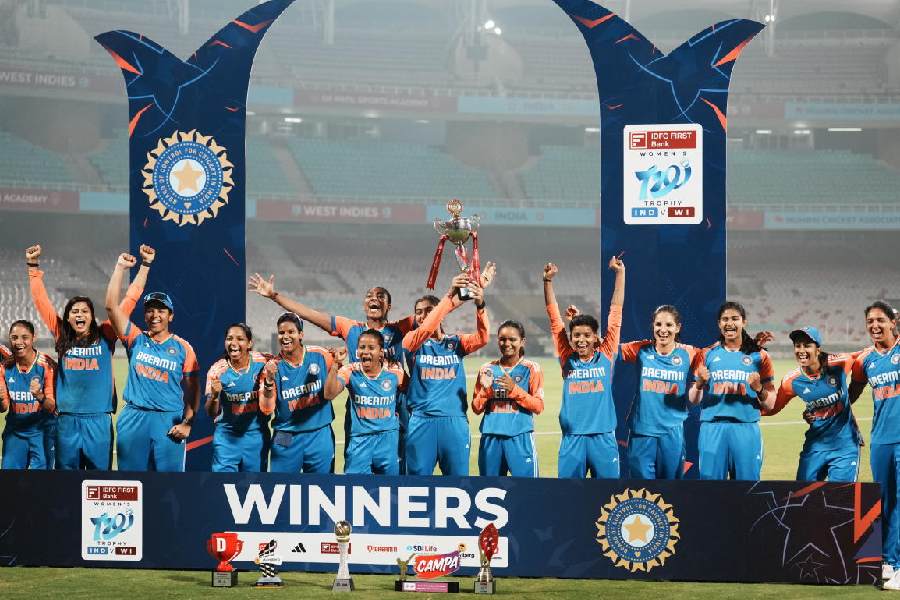Lalu Prasad Shaw, born in 1937, is known for his command over drawing, and this found expression most strongly in his graphic work of the 1960s. Age notwithstanding, the strength of Shaw’s lines is evident from his drawings of human figures, the latest of which were on display at Debovasha’s brand new gallery in an exhibition titled Crayons (March 25-April 13).
Shaw cannot go wrong with lines. Yet, no matter how technically flawless the drawings with brown crayon sticks may have been, one could not help but wonder why, after achieving near-perfection, Shaw continues to churn out the same thing over and over again. The medium may have changed but the contents remain the same.
Shaw can immediately be identified by his images of effete Bengali men — they have strong associations with the decadent babus of yore — and their female counterparts — beautiful, perfectly poised ladies of leisure who have been spared the stress and strain of modern life. Shaw’s images are often livened up by his sly sense of humour, along with touches of surrealism as he introduces an element of the bizarre in the most mundane of situations. A man with pouted lips stares back at a woman at her toilette from the hand-held mirror that she is looking into. The silhouettes of a man and a woman’s profiles are stuck into a knife as if they were apples (picture, right). A dhoti-clad young man holds up on the palm of his hand the head of a woman with her eyes shut. Everyday reality thus slips into the realm of the unreal.
Shaw draws heavily on Kalighatpats for this series of drawings. These ladies wear sarees that cling to their forms, not leaving much skin unseen. The only difference is that these are line drawings, unlike the painted bazaar bombshells of yore. Shaw has introduced the familiar motif of the cat holding a fish in its mouth as well. The image of a man sitting ramrod straight on a chair with a flowering plant in the foreground was surely lifted from the formal studio portraits that even middle-class people posed for (picture, left).
But it’s not all past perfect for he makes forays into contemporary life as well. These are not without precedents in his earlier works either. Shaw shows slices of urban life we are all familiar with. A lanky, middle-aged man with a receding hairline walks his mutt in a park on a winter morning. The same man sits on a stool, holding a conversation with someone outside the frame.
Then there is Shiva. Behind his dreadlock wig he is no divinity but a traditional performance artiste or a shong who ekes out a living by dressing up as a Hindu deity in keeping with a particular festival. The bespectacled young woman with a long face, too, belongs to the here and now. With her serious demeanour and her minimalist jewellery, she could be anyone of the college students who often hang out in cafes. Shaw’s heavily shaded portrait of the man who contemplates as he holds a cigarette in his hand comes closest to Everyman.











